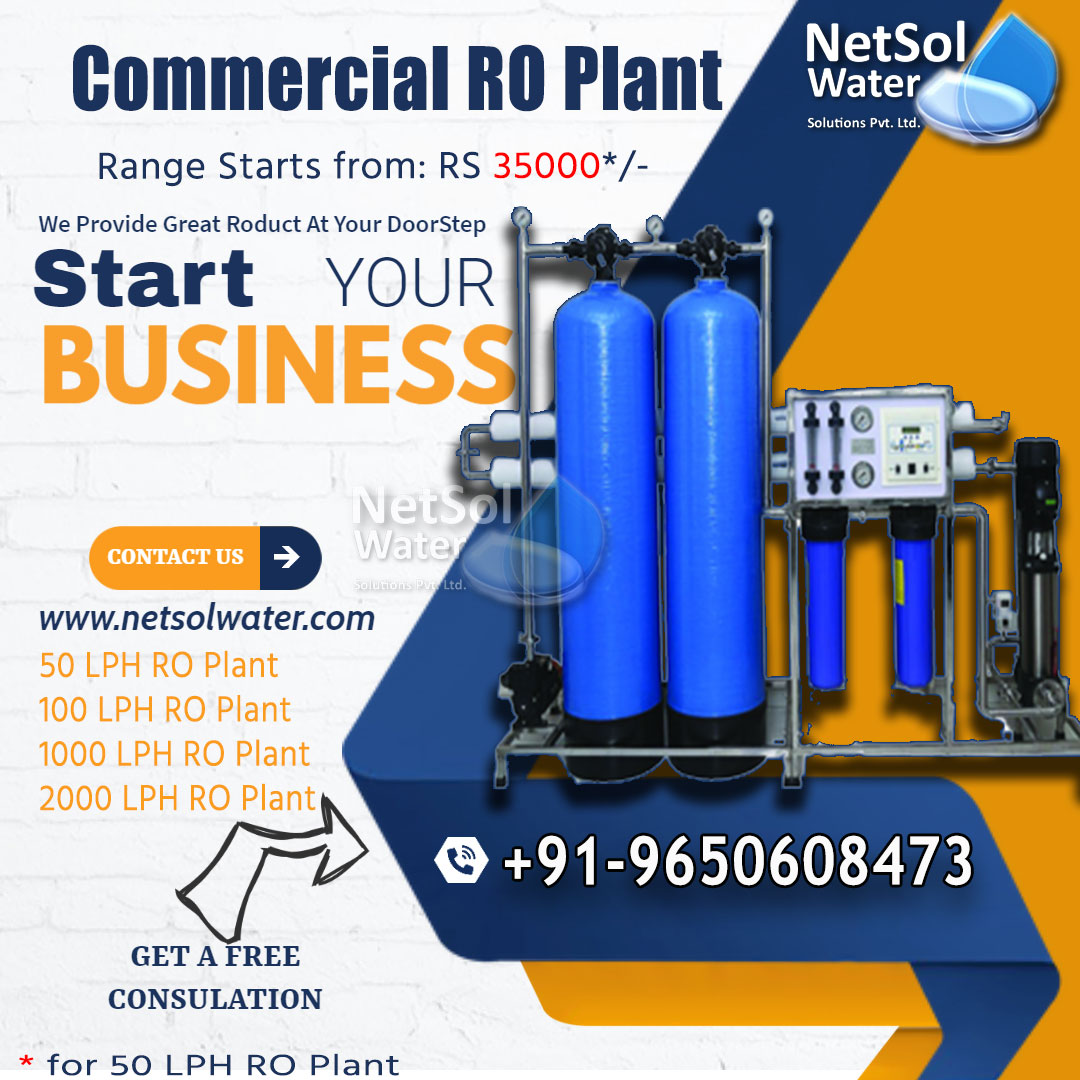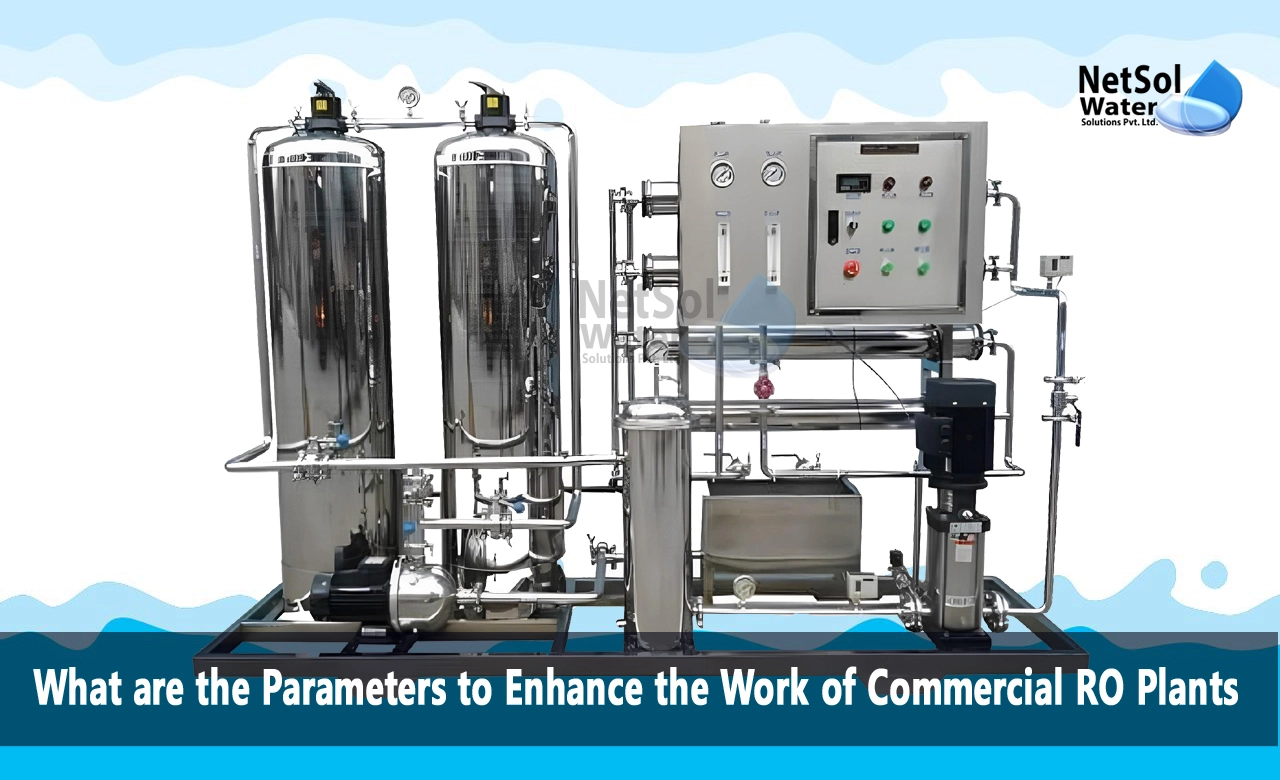What are the Parameters to Enhance the Work of Commercial RO Plants?
Reverse osmosis (RO) is a process that uses a semi-permeable membrane to remove ions, molecules and larger particles from drinking water. RO is used to desalinate brackish water and seawater for human consumption and industrial processes. Commercial RO plants operate at high pressures to overcome osmotic pressure and push water through the membranes, leaving behind dissolved salts. Several factors affect the performance and lifespan of RO membranes, including feed water temperature, salinity levels and membrane fouling. We will examines methods to correct these parameters to optimize commercial RO plant operations.
Impact of Temperature
Water temperature affects RO membrane permeability and salt passage. As temperature increases, water viscosity decreases, and membrane permeability goes up. However, higher temperatures also cause more salt passage through the membranes, reducing salt rejection. Most RO plants are designed to operate between 15-25°C. Temperatures above 25°C result in salt passage exceeding 2%, while colder feed water causes Scaling. To maintain optimal temperatures, RO plants use chillers, heat exchangers, and thermal energy storage systems. The feed water is cooled in summer and heated in winter to keep temperatures in the 15-25°C range. Chillers use refrigeration to provide cooling while heat exchangers transfer heat between hot and cold streams. Thermal storage tanks store cold or hot water to moderate feed water temperatures.
Optimizing Feed Salinity
The osmotic pressure of feed water, which is directly related to salinity levels, has a major impact on RO performance. Higher salinity requires higher operating pressure, increasing pumping costs. It also accelerates membrane fouling and scaling, reducing membrane life. Typically, seawater RO plants operate at feed water salinities below 45,000 ppm TDS. For brackish water, the upper limit is 10,000 ppm TDS. Salinity can be reduced by blending high-salinity feed water with low-salinity streams, or using an upstream process like nanofiltration. Regular monitoring of feed TDS along with chemical addition to prevent scaling helps maintain optimal salinity. Antiscalants change the solubility of salts to inhibit scale formation on membranes even at higher salinities. Acid addition lowers carbonate alkalinity and prevents carbonate scaling.
Mitigating Membrane Fouling
Membrane fouling occurs when suspended particles, microorganisms and mineral scales deposit on membrane surfaces. Fouling leads to flux decline, higher operating pressures, and frequent chemical cleans. Pretreatment is crucial to prevent particulate fouling. Methods include media filtration, microfiltration, ultrafiltration and cartridge filters. These remove suspended solids like silt, clay and silica that can block membranes. Chlorination controls biofouling caused by microbes growing on membranes. However, chlorination must be carefully controlled to avoid membrane damage. Online silt density meters (SDMs) continuously measure suspended solids levels, allowing timely backwashes to maintain low SDI. Regular cleaning-in-place using acids, alkalis, surfactants and disinfectants removes fouling layers, restoring membrane performance.
Optimizing Plant Performance
To enhance overall plant availability and efficiency, RO system design must include sufficient instrumentation for monitoring key parameters, along with control systems. Critical instruments include flow meters, pressure indicators, conductivity sensors, and pH and ORP meters. Online turbidimeters and SDMs provide feedback on pretreatment efficiency. Data from these instruments allow automated operation, responding to upsets and minimizing downtime. Control systems regulate operating pressures, membrane recovery and chemical dosing to maintain safe parameters optimal for membrane integrity. Advanced control features like feed forward and feedback control enhance process stability. Software platforms can integrate data for trend analysis and predictive maintenance. With tuning and optimization, continuous monitoring and automation minimizes deviations and enhances plant productivity.
Conclusion
Optimization of temperature, salinity and fouling are crucial for efficient operations in commercial RO desalination plants. Chilling, heating, blending, and upstream processes help maintain feed water within the ideal temperature and salinity range. Comprehensive pretreatment and cleaning procedures minimize fouling. Instrumentation, control systems and automation enable real-time monitoring and rapid responses to upsets. With careful system design, consistent performance monitoring, and development of optimal operating setpoints, commercial RO plants can successfully overcome these common challenges. The outcome is enhanced membrane life, reduced downtimes and chemicals, allowing plants to deliver higher quality water at lower costs.




